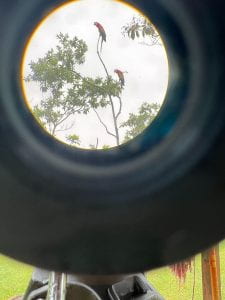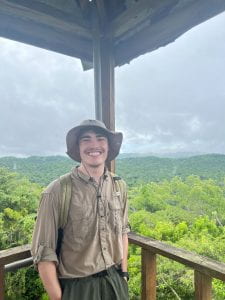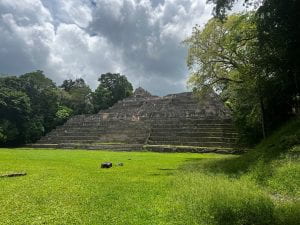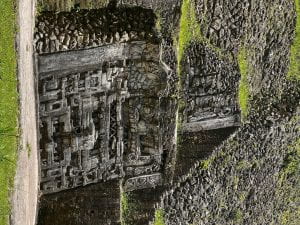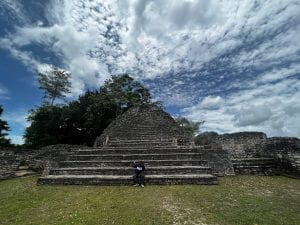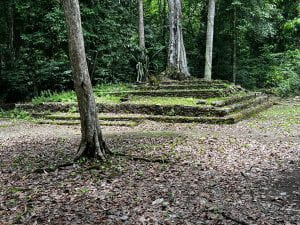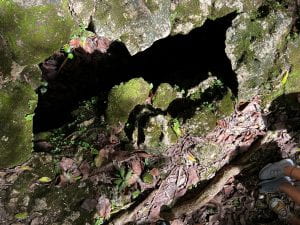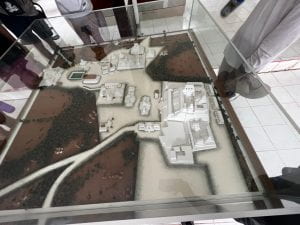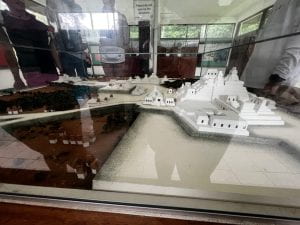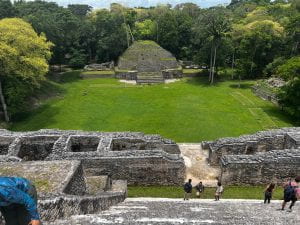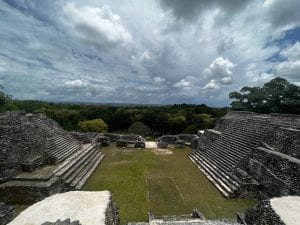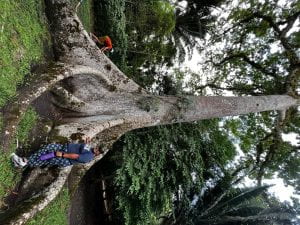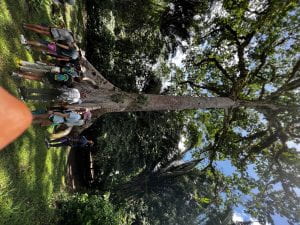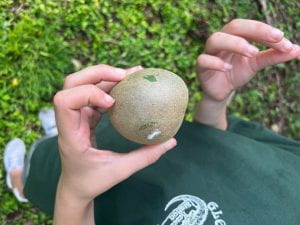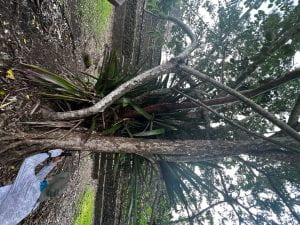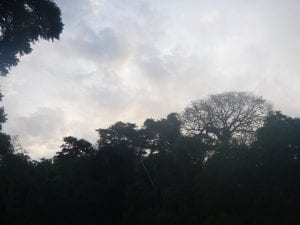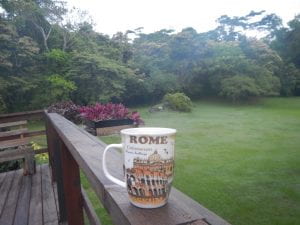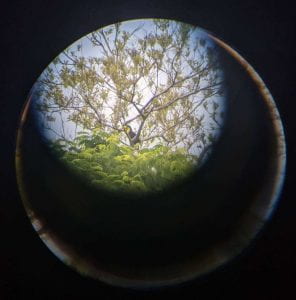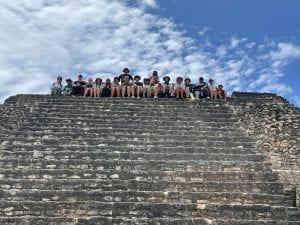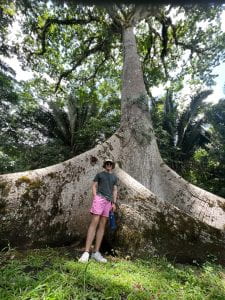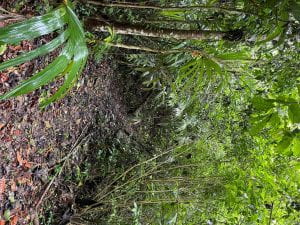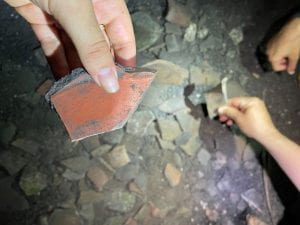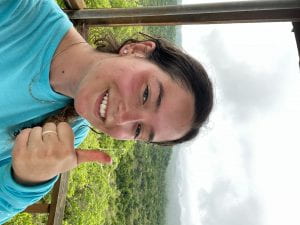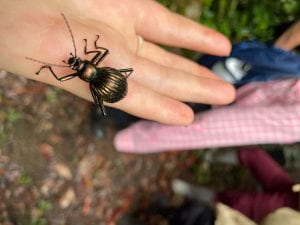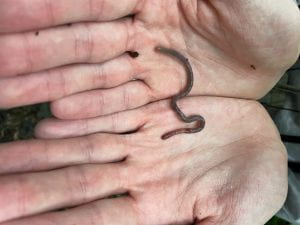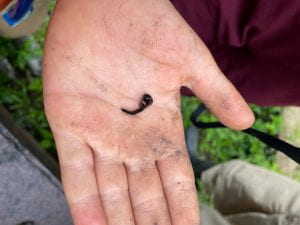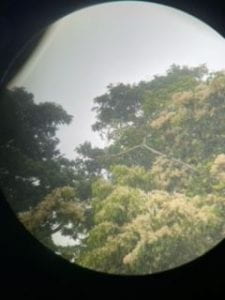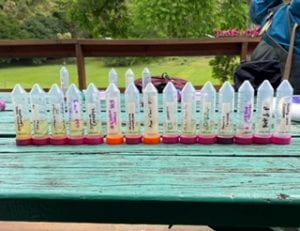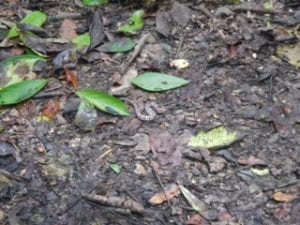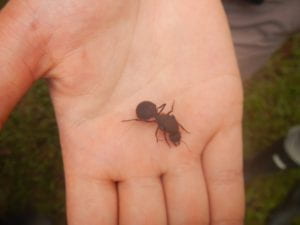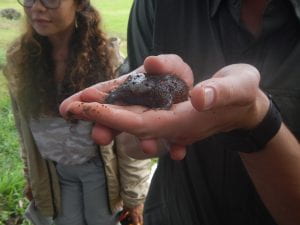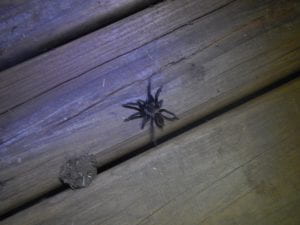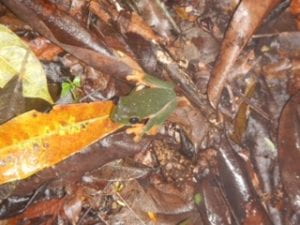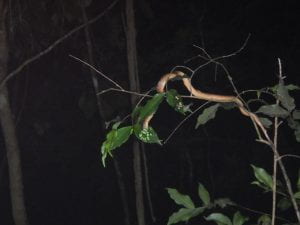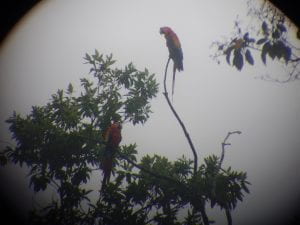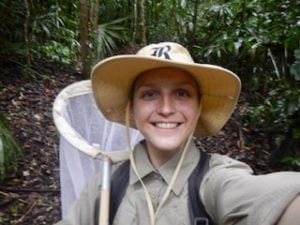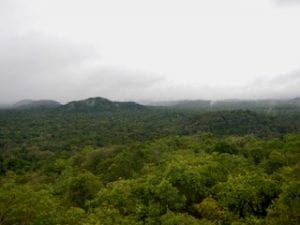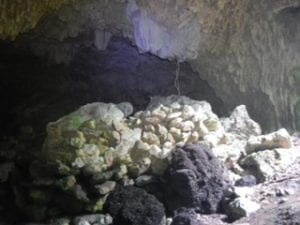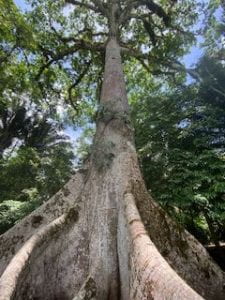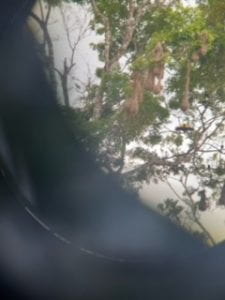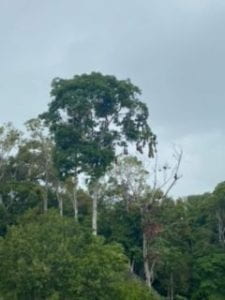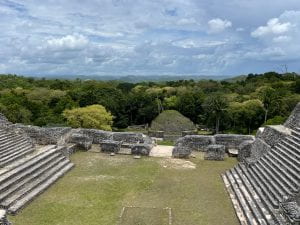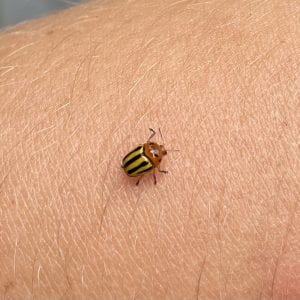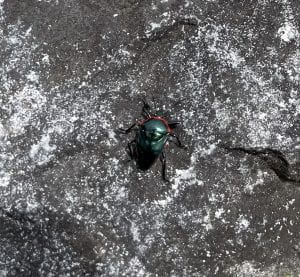Hey guys. It’s Michiel again : )
Today was really eventful. It started off slow with breakfast and a lecture in the morning, but it quickly picked up. At the end of the lecture, Scott had a discussion with us on nutrient availability in the canopy and the forest floor, and he related it to arthropods. Together, we came up with the question “How does nutrient availability influence arthropod abundance in the canopy and forest floor?” After we came up with this question, Scott told us that the way we’d be using nutrients for our experiment would be by peeing in tubes and using those tubes as traps. This was really surprising to all of us, and we promptly drank as much of our water bottles as we could. After we filled our tubes, we went out to the Mayan Trail to set up these pitfall traps. Basically, we each put one tube of pee flush against the trunk of a tree and another tube of water on the opposite side of the trunk. We also put a tube of pee and a tube of water in the soil at the base of the tree. Arthropods are expected to fall into these tubes.
While we were going through the path to set up these traps, we passed by a tree with scratch marks and an indentation in the ground at the base. We believe it may have been one of the cat species using the tree to sharpen/shorten its claws, but the scratch marks seemed to high and the indentation too big for it to be a margay (Leopardus wiedii) or an ocelot (Leopardus pardalis). However, they were too low and it was too small for it to be a jaguar (Panthera onca) or a puma (Puma concolor). My best guess is that it may have been a juvenile jaguar or puma.

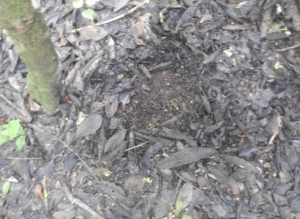
After a couple of hours, we finished setting up our traps and went back to Las Cuevas for lunch, After lunch, Scott and Adrienne sent us out to look for some leaf cutter ant nests in the clearing that surrounds the station. Elena and I didn’t find any, but we did hear something in the brush that kind of sounded like a monkey. We know that it wasn’t a black howler monkey (Aloutta pigra) because it sounded nothing like a black howler monkey, so we think it may have been a spider monkey (Ateles geoffroyi), but we couldn’t see through the brush, so we have no idea. After we heard it, though, someone called out that they had found a leaf cutter ant nest, so we went over there to check it out. Scott told us that it couldn’t be more than a year old, which is exactly what we were looking for. We began to dig right next to it so we could see the fungus garden. After a while of digging, major ants came out to defend their home. Ava and Elena kept trying to pick it up, and eventually they did! I’m proud of them. After a while of digging, we saw the fungus garden, which is gray, and then Scott pulled out the queen, which we each held. After achieving our goal, we went to a new nest that was older. However, after a while of digging, we couldn’t find anything – there weren’t even any ants. Before we gave up, though, we saw a Mexican Burrow Toad! We thought that it would be impossible for us to find this frog, but we all really wanted to because it’s so ugly (but in a cute way). I’m really glad we found it. Anyway, we went to a new leaf cutter nest after we put the toad back. This nest was much larger than the last, and it had soldier ants, which are much larger and bite harder than the major ants. After a while, we were able to get to the fungus garden and Elena and Ava picked up the soldier ants!
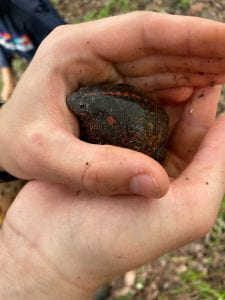
After the leaf cutter ant nests, we had lectures, then we had dinner. After dinner, we went on a night hike! The night hike was crazy. We saw two Morlet’s Tree Frogs, which are endangered, and we say nine snakes. It was really cool seeing all the snakes because we would think that we had found them all and then someone would find a new one. We were fixated on one of the snakes for 20 minutes, which we saw eat some red eyed tree frog eggs, which are also endangered. After we watched the snake eat those eggs, we went back to Las Cuevas, worked on our blogs and field notebooks, and went to sleep.
I’m really hoping I see more mammal-related stuff tomorrow, but I know for sure that I’ll keep you guys updated!

